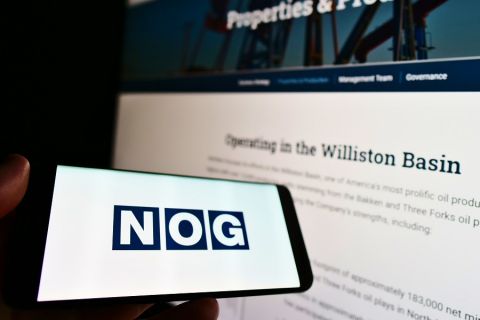The midstream must expand and rearrange itself to meet the growing needs of North American oil and gas producers. But how can that be done in an environmentally friendly manner? The public increasingly demands big projects that have little impact. Environmental regulation is exceedingly complex and constantly changing. Resource Environmental Solutions LLC (RES) is one of several firms that help midstream operators navigate the environmental- regulatory swamp.
It supplies ecological offsets and restoration services throughout the U.S. for clients ranging from major international corporations to local governments. To date, RES says it has restored more than 20,000 acres of wetlands, streams and habitats.
Environmental questions can slow—or halt—the best of projects, points out RES Chief Executive Elliott Bouillion, who has 30 years’ experience in the industry since receiving an electrical engineering degree at the University of Louisiana- Lafayette. Planning, communication and coordination are key to receiving permits and keeping projects moving, he says.
MIDSTREAM:You work in a highly specialized area, describe how you got into this field.
BOUILLION: After 12 years with Landmark Graphics, which was sold to Halliburton, I began to investigate new opportunities. I had spent a lot of time helping oil and gas companies de-risk their exploration operations by using 3-D seismic interpretation tools. My homework led me back to my Louisiana roots where we recognized the need for ecological offsets for wetland impacts.
This was very intriguing, and we began digging deeper. We found an opportunity to invest in, and restore land, so that the resulting ecological credits could be used for beneficial economic development.
It’s a great business with many moving parts and a lot to consider every day. What was a company founded in and servicing Louisiana now operates in several states supporting shale plays and other infrastructure development.
MIDSTREAM: Midstream executives often say the environmental permitting process is one of the biggest hurdles they face with planning and building pipelines, gas plants and other projects. What can they do to streamline the process?
BOUILLION: I think planning ahead is key. Just as midstream executives study the economics of a future capital expenditure decision, they need to comprehend the environmental challenges that can arise from operating in any given area.
Right now, more than ever, with midstream projects— whether flow lines, gathering systems, laterals and trunks going to processing plants or whatever—the project footprint will definitely have both regulatory agency and public scrutiny.
We help companies discover surface impacts from planned projects so they understand the scope and magnitude of the environmental permitting challenge. This early knowledge of potential costs and project choke points allows them to plan up-front with the regulators. That’s the key. Planning ahead also enables outreach activities with the community, and we all know that communications and community outreach can calm public anxiety about energy projects.
MIDSTREAM: Environmental regulation seems to be a moving target. How can the midstream become more involved in the overall process of regulatory oversight?
BOUILLION: At midstream companies, environmental is a component of all parts of the business. From design and construction, to operations and maintenance, and finally even decommissioning, we see multidisciplinary teams, including consultants, sitting down and planning for all the environmental issues.
This can’t be just a one-time activity. As you say, regulation can be a moving target because regulatory scrutiny is inevitable. For example, the current administration has implemented Executive Order 13604 that’s focused on improving performance of federal permitting and review of infrastructure processes. The order requires agencies to develop best practices for improved environmental and community outcomes; there’s change coming.
Are midstream companies prepared? What departments or groups or teams at a company should look after these things? Is it government relations folks? Is it legal or outside counsel, or consultants, or all of the above? What is needed is some focus on the topic of planning for the future; bring all those folks together to plan for those future impacts early-on in the project lifecycle.
MIDSTREAM: Perhaps not everyone is familiar with the concept of environmental offsets and mitigation banking. Can you describe how the system works?
BOUILLION: The concept of no net loss of wetlands was introduced by the first President Bush in 1992. Projects that impact wetlands must have a corresponding ecological offset to maintain a balance—therefore there is no net loss of wetlands.
When an oil and gas producer or a midstream transportation company wants to construct in a wetland, or cross a stream, they need to identify where the impacts will likely occur and then they have to locate some ecological offset that will satisfy regulators. We focus on delivering those offset solutions. An industry term, mitigation banking, describes one of the solutions.
By restoring wetlands, we repurpose these lands to what they used to be. Mitigation bank credits are earned in return for this restoration. These credits are used for project permits as an offset for the corresponding impact.
MIDSTREAM: What environmental issue would you rate as most important right now, air or water?
BOUILLION: That’s an interesting question. Water impacts are visible to the public eye, but the potential for unseen impacts from greenhouse gas emissions is getting tremendous regulatory- agency scrutiny.
Cumulative impacts from pipeline construction and compressors operated along a pipeline route [NESHAP ZZZZ] are sources of air emissions that must be analyzed to properly be permitted. Even potential biological impacts from potential emissions must be studied and quantified. These processes have added complexity to permitting and, of course, have lengthened the permitting cycle and no doubt added to project costs.
MIDSTREAM: How can operators build relationships in advance with regulatory agencies? What about community relationships in affected areas?
BOUILLION: I think, first of all, it’s important to reach out with proactive solutions to permitting challenges. Agencies need to understand your mission and your goal so they can evaluate your project in context.
Each project is permitted in a stand-alone fashion but regulators permit lots of projects, so they’re really familiar with the challenges faced with operating conditions, like horizontal bore versus an open-cut decision, for example. Positive community response also comes from planning ahead and developing alternatives that can be whittled down to a single solution, then shared through a public disclosure process. You have to come to them with a solution and sometimes it’s not only for the regulatory agency but also to address local community issues.
MIDSTREAM: What hurdles do regulators have that the industry may not appreciate?
BOUILLION: Regulators are people who implement law and regulation, both as individuals and as agency members. They have their own biases and preferences. Communication, early and often, with project regulators is important to having them understand your project. Simply knowing that a permit is required prior to construction, and that offsets or mitigation must be purchased, isn’t a substitute for beginning the project with the end in mind and getting with all project constituents early-on in the process.
Regulators also have to deal with changes in laws and regulations and also court cases that test the law. They need solutions suggested to them so they can weigh their appropriateness. No one understands the project better than the operator who needs to share that knowledge with the regulators and work with them to resolve the inevitable challenges that arise from complex projects.
MIDSTREAM: What trends do you see in environmental issues? How will these trends impact the oil and gas business?
BOUILLION: Environmental issues aren’t the world of bugs and bunnies that we used to talk about. With project visibility comes increased project scrutiny and regulatory oversight. More enforcement may come over time, and I think executives need to be prepared to address that scrutiny. They can do so very effectively if they understand that thorough project planning includes comprehensive avoidance and minimization measures so that when a project impact does occur, that the company is complying with the local, state and federal laws and regulations.
Planning for a changing regulatory environment is difficult and requires proactive, dedicated resources and a team effort to understand the implications of change in all of the areas of environmental regulation that are evolving—air, water and waste. They’re constantly changing.
MIDSTREAM: There’s a lot of misinformation with the public about energy-related environmental issues, particularly hydraulic fracturing and its impact. How does this impact the regulatory process?
BOUILLION: I think while the energy industry continues to educate the general public on the technical concepts of their operations, the public needs to understand that by and large the industry is led by compliance with regulations. Executives want project success and safe, happy employees who can go from project to project without incident. The industry wants to understand the current laws and regulations on the books so they can simply comply. Any time there is a change in rules, regulations or interpretations, operational activities can be disrupted and the potential for liability and risk from non-compliance increases astronomically. Just like there is a high level of safety consciousness in the industry, so, too, must there be awareness of changing regulations.
There’s no contesting that public perception of the energy industry could be improved and that happens with education and ongoing dialogue.
MIDSTREAM: On average, what percentage of a typical midstream project’s costs should be earmarked for environmental and permitting activities?
BOUILLION: Every project is different. From our look at many billion-dollar and larger projects, it shows up as one-half of 1% on average. For pipelines, environmental costs may be small relative to the project costs, but they are the primary driver of project schedules. That’s the key, while the dollar cost is relatively small, from our experience.
MIDSTREAM: Where does environmental permitting go from here?
BOUILLION: We believe environmental permitting will only become more rigid over time. The level of enforcement of permitted activities will likely increase. The federal sequester, for example, has reduced the number of regulators in the field, but this is a temporary phenomenon. I think with enforcement comes penalties and fees that are used to drive regulatory agencies. Permitting may become more automated over time and that will help everyone with the mountain of paper required to justify permits.
Recommended Reading
Occidental Increases Annual Dividend by 22%
2024-02-11 - Occidental Petroleum Corp.’s newly declared dividend is at an annual rate of $0.88 per share, compared to the previous annual rate of $0.72 per share.
Atmos Energy Announces Quarterly Dividend
2024-02-11 - Atmos’ dividend marks the company’s 161st consecutive quarterly dividend.
From Restructuring to Reinvention, Weatherford Upbeat on Upcycle
2024-02-11 - Weatherford CEO Girish Saligram charts course for growth as the company looks to enter the third year of what appears to be a long upcycle.
Atlas Energy Solutions Declares Dividend
2024-02-09 - Atlas Energy’s dividend represents a 5% increase from the previous quarter’s dividend.
Northern Oil and Gas Ups Dividend 18%, Updates Hedging
2024-02-09 - Northern Oil and Gas, which recently closed acquisitions in the Utica Shale and Delaware Basin, announced a $0.40 per share dividend.





